
Thin Noodles (Hosomen)
Light and delicate, thin noodles are often used in lighter broths like shio (salt) ramen. They cook quickly and provide a subtle texture.
Ramen is more than a dish; it’s a cultural icon of Japan. Now, navigating the world of ramen can be a little dauting at first, as this bowls are quite a culinary journey! But worry not. There are two main choices you will have to make when choosing ramen: The broth and the noodles. And I’ve got you covered on both.
Ramen noodles can be thin or thick, straight or wavy, depending on regional variations and personal preference. In short, these noodles are incredibly diverse! Here are some of the most common types, their Japanese names, and (if you click on them) a small recipe or links to get them yourself if you want to try making ramen:
We can classify ramen noodles by thickness into three categories: Thin (also called Hosomen), Regular (Chukamen), or Thick (Futomen). A good example of a ramen using thin noodles is Hakata Ramen from the region of Fukuoka, which has a light broth, and one of thick noodles is Miso Ramen (Hokkaido style), which is particularly rich and hearty.

Light and delicate, thin noodles are often used in lighter broths like shio (salt) ramen. They cook quickly and provide a subtle texture.

Chewy and robust, thick noodles are perfect for rich broths like tonkotsu. Their substantial texture holds up well in hearty soups.
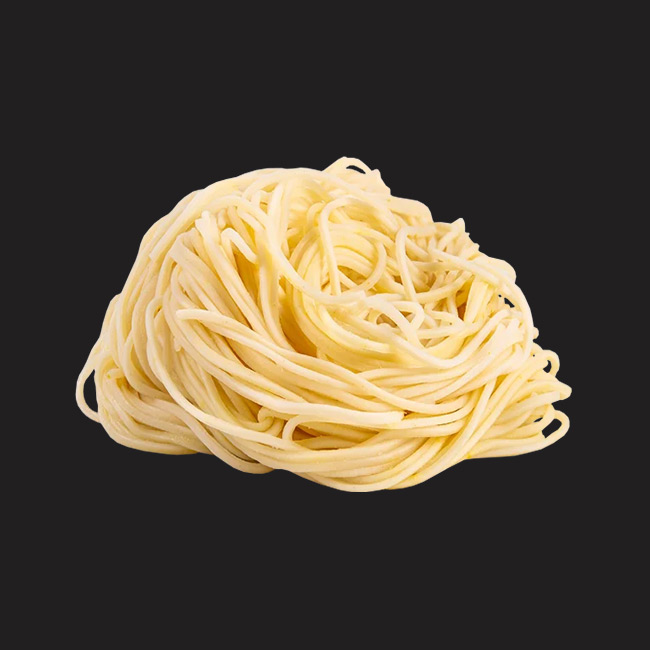
Chukamen are the standard ramen noodles, neither thin nor thick. They are springy and slightly chewy, and made with kansui.
The noodle shape plays a crucial role in how the broth clings and how the dish feels overall. Flat noodles, like those used in Kitakata Ramen, are broad and slightly chewy, ideal for soaking up lighter broths. Wavy noodles, commonly found in Sapporo Miso Ramen, help trap the rich, oily miso-based soup, enhancing each bite. Straight noodles, such as those in Hakata Ramen, are typically thin and firm, making them perfect for the creamy, pork-heavy tonkotsu broth.
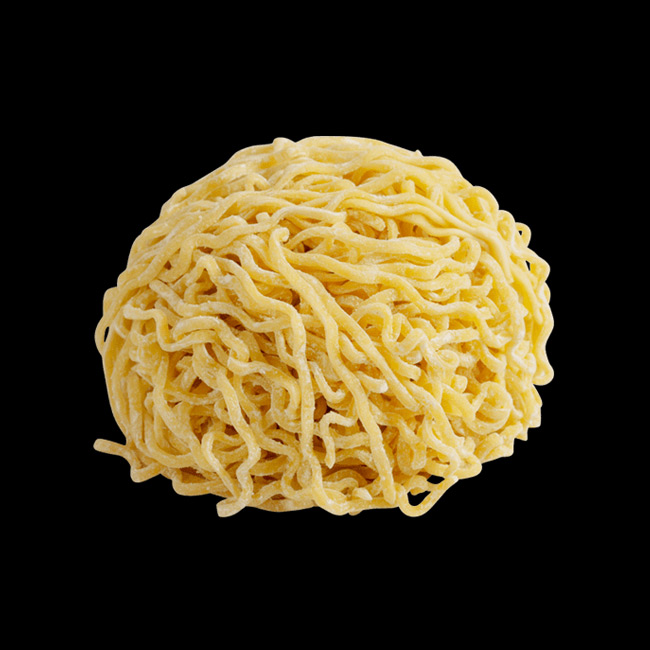
Curly and bouncy, wavy noodles are great for holding onto broth and toppings. They are commonly found in shoyu (soy sauce) ramen.

Smooth and firm, straight noodles are ideal for miso ramen, allowing the broth’s flavor to shine through. They have a clean, uncurled form.
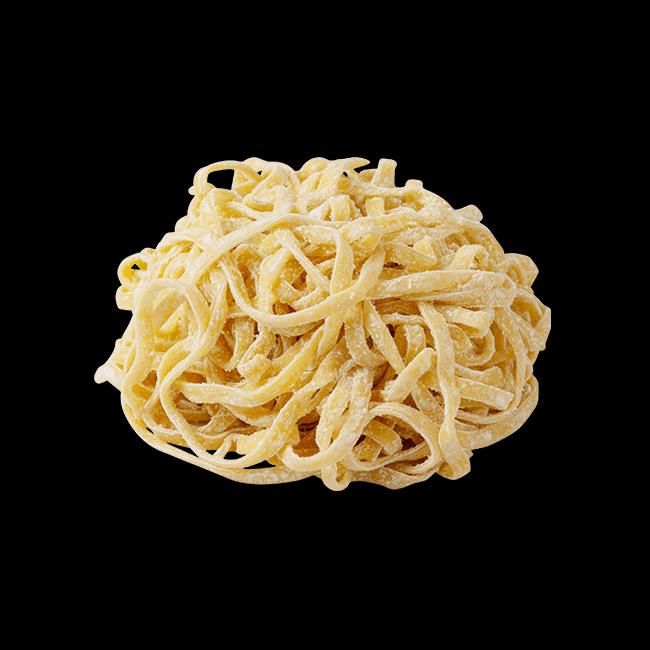
Wide and ribbon-like, flat noodles add a unique texture to ramen dishes. Often used in regional specialties, they soak up the broth’s flavors.
Ramen noodles can also vary by ingredients, leading to different textures, flavors, and appearances. Other common and unique types based on their composition are whole wheat noodles, buckwheat noodles, gluten-free noodles, and many more. Here are some examples you can explore:

Made with whole wheat flour, whole wheat noodles offer a slightly nutty flavor and a healthier option. They bring a distinct taste and texture.

Buckwheat noodles, known as soba in Japanese cuisine, are made primarily from buckwheat flour. They are high in protein and fiber.
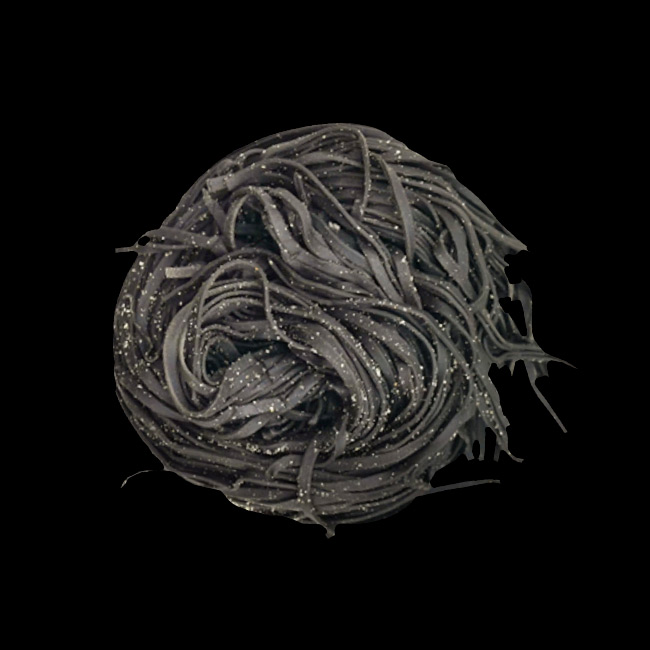
For visual flair and a slightly smoky or briny flavor, some specialty ramen shops offer noodles made with activated charcoal or squid ink.
Ramen noodles are crafted from a simple but precise combination of wheat flour, salt, water, and kansui, an alkaline mineral water that is essential to their unique character. Kansui typically contains sodium carbonate and potassium carbonate, and sometimes a bit of phosphoric acid. It raises the pH level of the dough, which not only affects the flavor but also alters the protein structure in the flour. This chemical reaction is what gives ramen noodles their firm, springy texture and signature yellowish hue, even though no egg is involved (despite common belief).
The type and ratio of ingredients can vary by region and style, affecting noodle thickness, curliness, and chew. For example, thin, straight noodles are common in Hakata-style tonkotsu ramen, while wavy, thicker noodles might be used in miso ramen from Hokkaido to better cling to the rich broth. The texture created by kansui also allows the noodles to hold up well in hot soup without becoming soggy quickly, making them ideal for the ramen experience.
Let’s break down the different decisions you might need to make when choosing your ramen noodles.
First of all, there are three main types based on thickness: Chukamen (standard), Hosomen (thin), and Futomen (thick). Thinner noodles go better with lighter broths like Shio or soy sauce broth, and thicker ones with denser broths like Tonkotsu or pork.
The next choice has to do with the shape. There are two main shapes: Straight noodles and wavy noodles. The most common type is straight, as they provide a consistent and uniform texture. Curly noodles, on the other hand, capture more seasoning, so they are better for richer broths.
Once you have decided on thickness and shape, the next step is to consider firmness. You can opt for firm noodles (katame), regular (futsuu), or soft (yawarakame). And lastly, you can choose the broth strength and the portion size. And embrace the art of slurping!
Dive deeper into the fascinating world of ramen noodles and enrich your knowledge and appreciation of ramen noodles, from their intricate preparation methods to their cultural significance.
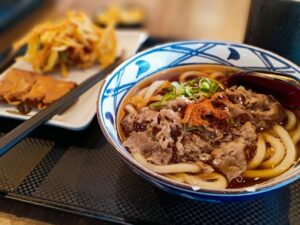
Explore how variations in ramen noodles ingredients, cooking techniques, and regional preferences create these two distinct textures.

Kansui is a key ingredient in ramen noodles and is responsible for their distinct texture, color, and flavor. Let’s learn more about it.
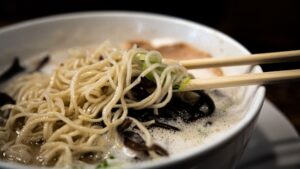
Dive into the science behind ramen noodles and discover what makes them so special, from unique ingredients to cooking techniques.
If you are looking for ramen books, tools, and ingredients for your next experiment, here is a selection of my top resources and accessories. You can get them all online! There is more, though. Click here to see the whole shop.